12 Types of Shovels Essential to Your Yard Work Needs
Author: Chris Miller | Editor: Omar Alonso
Review & Research: Jen Worst & Chris Miller
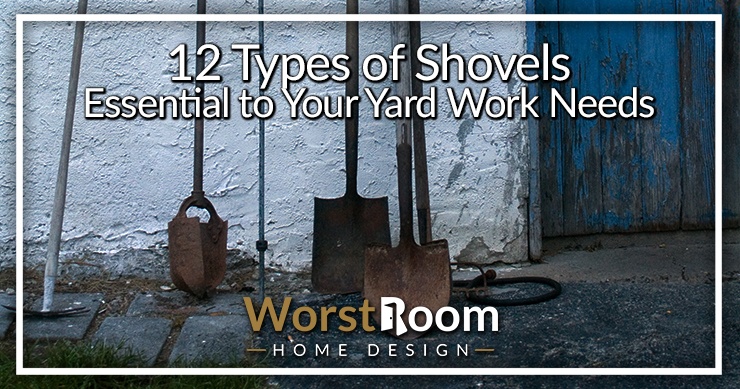
Often confused with spades, all the different types of shovels are actually a concave tool that usually has a curved tip and a board blade. They're great pieces of equipment to move materials and dig dirt, mulch, or snow.
Whether you want to use it in a garden or to get rid of unwanted dirt and snow outside your driveway, you can get the job done by picking the right kinds of shovel.
12 Types of Shovels
If you are not sure what each of the varieties in the market is for, we are here to help you out. Let's look at the various shovel types below.
Digging Shovels
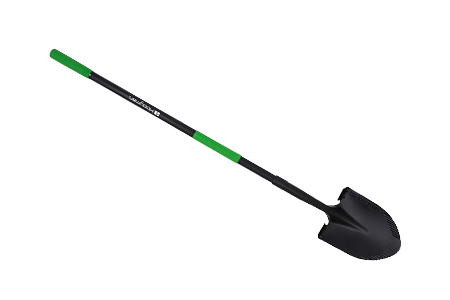
These are your standard shovel types and the usage of is fairly obvious by the name. It has a scoop that is slightly curvy and the edges are upturned. The center is often pointed and if not the tip is a bit flat on the left side.
A shovel with a pointed tip is very useful when it comes to digging up soil and plating tilled soil. They are among the quintessential digging tools that we couldn't get by without. And the sharp tips are of great use when you have to work with hard-packed soil because you will need to apply more force on them.
They are also referred to as square point shovels when the scoop isn’t all that curvy and they can be used in a garden instead of a spade for jobs like edging and moving small plants and trees from one place to the other.
You can also use them to cut small roots and sods. If you are into trenching and dividing perennials, well, you’ve got the shovel for that job too. Some even have serrated edges to help cut through roots, called root shovels.
If you get a digging shovel with a steel scoop, you will have done a better job than your peers who bought aluminum alternatives. These shovels come with wood, metal or composite handles.
Trench Shovels
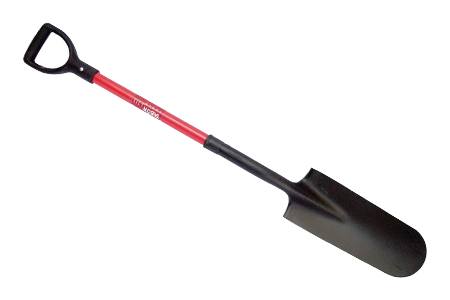
This one is also called a clean-out shovel and is typically long with a sharp curve and a narrow, pointed blade. The curve is meant to help you draw the borders for trenches and clean out its surroundings.
If you have a power trencher that does most of the job, you can get a manual trench shovel for some finesse. And it works great if you want to draw lines for garden beds.
Since these types of shovels have a narrow blade compared to the drain spade shovel, there is little space for you to dig deep into the ground because there isn’t too much space for your foot.
You will have to use your arms and your core to apply force. If you are a gardener or a landscaping professional, you have to have this. They feature all the regular parts of a shovel, just a longer and thinner blade.
Drain Spade
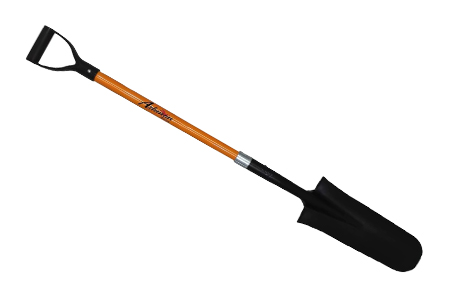
Very similar to a trench shovel, the drain spade is kind of like one-half of a post hole digger. Sometimes called transplanting spades, they're used to dig smaller holes for planting or transplanting trees, shrubs, and yes, posts like for most types of mailboxes. Make sure you know the best time to plant fruit trees when you transplant them.
Clam Shovels
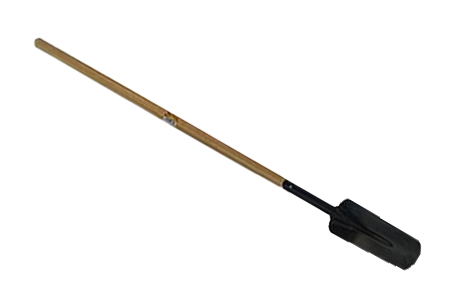
If you are at the beach looking for razor clams, this is the perfect tool to take along. The blade is angled in a way that makes it easy to dig any types of clams even more so that a clam gun.
You can choose between stainless steel variations of a semi or a full angle which is why a lot of people like these clam shovel types.
Use your body weight to push the blade of this shovel vertically in the sand and lift it up while continuing to push the shovel forward. You will see that you have successfully exposed the clams in the area.
Folding Shovels
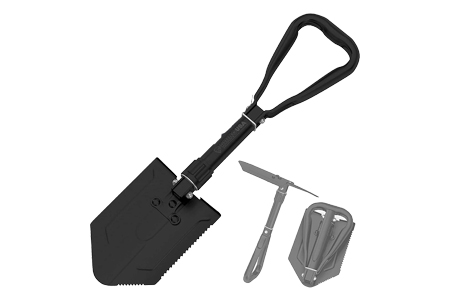
You can think of these as survival shovels, tactical shovels, or even as fire pit tools. They either fold or collapse to make the handle much shorter so they can be portable and take up less space.
They're usually made of light metal or very sturdy plastic on the handles, but regular metal blades on the front.
Edging Shovels
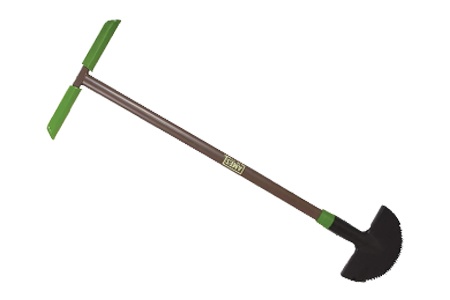
Those of you who have lawns and gardens and want to create nice little borders around them must get one of these types of shovels. As the name suggests, edging shovels are made to create definitive edges.
Once you are done with this, your lawn border will look like a well-groomed beard. It has a small metallic semi-circle at the bottom and there is a long shaft for you to work with.
If you look at a picture, you will find a straight footplate that is very useful in terms of helping you apply pressure on it using your feet.
You will find the blade to be flat and sharp which makes it easy to press it down into the soil. The blade itself is supposed to be shallow because it is not meant to be used for digging or making deep cuts.
Then again, you actually can use this for more than drawing clean borders. For instance, edging shovels are greatly used in gardening to break up the roots of plants that are shallow.
Since they have a small blade, these shovels are great to use in small areas without harming the nearby plants. It is a very specific use but one that all gardeners routinely have.
Flat Shovels
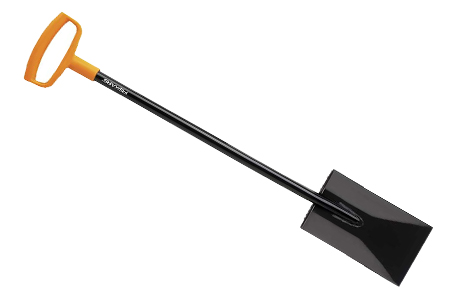
This particular variety has a flat heat but the overall shape is a bit concave which is what makes it a shovel at all. It is a great tool when it comes to scooping and transferring materials from one place to another.
You can use it to dig into the ground although the flat end can create a bit of a problem. A shovel with a round or pointy tip is better for that.
What it is best for is edging jobs and to clean out the trenches. So, if you don’t have the shovels that have been mentioned above which are precisely for these tasks, you can still get the job done with a flat shovel. Just don't try to toss the soil into any types of buckets or you'll spill a bunch with these wide, broad shovel faces.
It is also pretty useful when it comes to scooping and spreading soil or mulch. If you have a lawn that requires you to walk about with a wheelbarrow to collect materials that you’ve dug out, this shovel will come in handy for all the things you have dug out prior to the walk.
Mulch Scoop / Snow Shovel
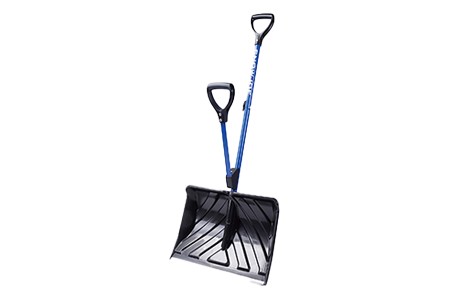
These are large, square faced types of shovels with raised edges to help you scoop up mulch, mulch alternatives, snow, coal, grain, or pebbles without losing a bunch of it off the sides as you swing the shovel around.
They also tend to have longer handles and shafts as well. Sometimes their called barn shovels or grain scoops. They don't have steps below the sockets like on regular digging shovels since these are made for scooping instead.
D-Handle Shovels
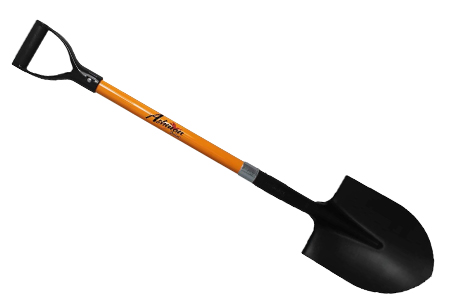
Well, once again, the name of these shovel types says it all. This is a specific type of shovel that gives you a lot of grip. It has a D-shaped handle, obviously, with a shorter length and its end has a metal or a plastic grip.
It is particularly for those who want better control, stability and the ability to maneuver a shovel well which is possible because of its superior grip.
This is sometimes also an umbrella term because you will find garden shovels and coal shovels with this type of handles.
Power Shovels
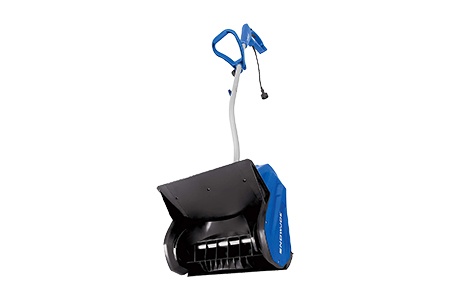
Now, there is a snow shovel that is powered by electricity or gas which is categorized as a power shovel. These shovels have multiple blades that can rotate in order to pick up snow and disperse it.
If you live in cities where you need to clean up the snow in your driveway, this is the tool you want to have. It is also better than a manual snow shovel because it is lighter and smaller.
That is also the reason these snow shovels are better than a snowblower. But it is a tad bit expensive even though it is completely worth it.
The other kind of power shovel looks like a jackhammer that has a shovel as an attachment. They are used to dig holes or trenches and excavate the ground when the soil seems to be very compact.
They are pretty small in size which means you can take these types of shovels where heavy machinery can’t go.
Hand Shovels
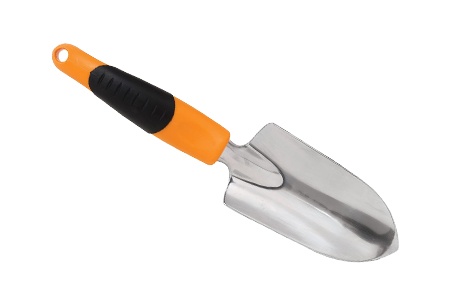
This one is a fairly popular one. It is a common tool used in all types of gardens across the globe. A lot of people have three types of hand shovels because, for one, they are quite affordable and having them at different places comes in very handy.
They are basically the miniatures of the big shovels and can be useful in carving different types of designs in the garden. They're often called garden trowels. They're also helpful when learning how to bank a fire in terms of blocking wind and creating exhaust holes.
Usually, they are six to eight inches long and have a pointed or rounded blade. The blade itself is roughly four inches in width and is a great help when it comes to digging holes in the garden.
It is great for activities like pulling up weeds and plants when you want to transplant them. In fact, if you are moving plants from a medium- to large-sized pot, this is the shovel you want in your hands.
Post Hole Shovels
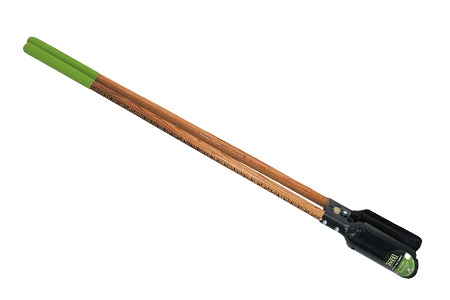
Finally, there is the clamshell digger, also called the post hole digger. This one has two curvy blades and handles. These shovels also have round or pointed tips which are very useful when cutting or jabbing through things.
They are also great to dig up narrow but deep holes in the garden for picket fencing activities. You will find them in a couple of different designs which are just for variety. Whichever post hole shovel you pick, the job will be done with ease and comfort, so they say. I'd rather use an auger.
You will also see some trench shovels being labeled as post hole shovels because they have blades that look similar. Trench shovels are also useful in cleaning out holes like clamshell diggers.
Types of Shovels for All Your Lawn & Garden Needs
There are many shovel types on the market and each of them has a specific role or feature like folding in half for easier carrying or storage. How to decide which one to get? Well, that depends on what you want a shovel for.
But, remember that it is likely that you will need more than one of these different types of shovels if you are serious about gardening or heavy duty lawn care.



